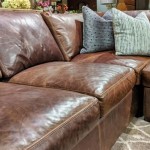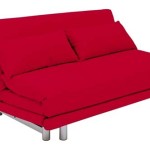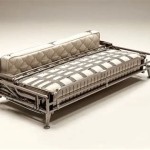Understanding the Standard Length of a Sofa: A Comprehensive Guide
A sofa is a fundamental piece of furniture in most homes, serving as a central point for relaxation, conversation, and even occasional sleeping. When selecting a sofa, numerous factors come into play, including style, material, comfort, and, crucially, size. Understanding the standard length of a sofa is essential for ensuring it fits appropriately within the designated space, complements the existing décor, and meets the functional needs of the household.
The term "standard length" can be misleading, as sofa dimensions vary significantly depending on the design, intended use, and manufacturer. However, there are general ranges that are commonly observed across different sofa types. This article will explore these typical dimensions, delve into the factors influencing sofa length, and provide guidance on determining the ideal sofa size for various living spaces.
Key Point 1: Typical Sofa Length Ranges
The length of a sofa, generally measured from the outermost point of one armrest to the outermost point of the other, is a primary indicator of its seating capacity and overall presence in a room. While customization is always an option, manufacturers often adhere to standard length ranges to simplify production and cater to common consumer needs. These ranges can be categorized based on sofa type and seating capacity.
Loveseats: Often considered small sofas, loveseats are designed to comfortably accommodate two people. The typical length of a loveseat ranges from 58 inches (147 cm) to 72 inches (183 cm). This size is ideal for smaller apartments, bedrooms, or as a supplementary seating option in larger living rooms.
Standard Sofas (Three-Seater): These sofas are designed to seat three adults comfortably. The standard length typically ranges from 78 inches (198 cm) to 96 inches (244 cm). This is a versatile size suitable for a wide variety of living spaces and family sizes.
Large Sofas (Four-Seater or Sectional Pieces): These sofas are designed for larger spaces and can accommodate four or more people. The length can vary significantly depending on the design, but typically starts at 96 inches (244 cm) and can extend well beyond 120 inches (305 cm). Sectional sofas, composed of multiple interconnected pieces, often fall into this category and can be configured to create various shapes and sizes.
It is important to note that these are merely general guidelines. Manufacturers often offer slight variations within these ranges, and specific designs, such as those with particularly wide armrests or rolled backs, may exceed these dimensions. Always verify the specified measurements provided by the manufacturer before making a purchase.
Key Point 2: Factors Influencing Sofa Length
Several factors contribute to the overall length of a sofa. These include the design aesthetic, the intended seating capacity, the inclusion of features such as reclining mechanisms or storage compartments, and the overall style of the sofa. Understanding these influences can aid in selecting a sofa that meets both functional and aesthetic requirements.
Armrest Design: The style and width of the armrests significantly impact the overall length of a sofa. Sofas with wide, rolled armrests will naturally be longer than those with sleek, narrow armrests. For example, a Chesterfield sofa, characterized by its rolled arms and button-tufted upholstery, will typically be longer than a mid-century modern sofa with minimalist armrests, even if the seating area is similar in size.
Back Style: The height and style of the sofa back also contribute to the overall length. Sofas with high backs or elaborate ornamentation may require more space than those with low, streamlined backs. The inclusion of features like adjustable headrests can also add to the overall length.
Cushion Configuration: The number and arrangement of cushions influence the seating area and, consequently, the overall length. A sofa with three generously sized cushions will generally be longer than one with two smaller cushions, even if the frame size is similar.
Reclining Mechanisms: Sofas with reclining mechanisms require additional space to accommodate the reclining function. These sofas are often longer than their non-reclining counterparts, even when in the upright position. The range of motion of the reclining mechanism should also be considered when determining the appropriate placement of the sofa in the room.
Sofa Style: Different sofa styles tend to adhere to certain length conventions. For example, contemporary sofas often prioritize sleek lines and minimalist design, resulting in a more compact length. Traditional sofas, on the other hand, may incorporate more ornate details and larger proportions, leading to a greater overall length.
Frame Construction: The materials used in the sofa's frame can also dictate its dimensions. Solid wood frames may require thicker supports, contributing to a slightly larger overall length compared to sofas with thinner metal or engineered wood frames.
Key Point 3: Determining the Ideal Sofa Length for Your Space
Selecting the appropriate sofa length requires careful consideration of the available space, the intended use of the sofa, and the overall aesthetic of the room. A sofa that is too large can overwhelm a small space, while one that is too small may appear insignificant in a larger room. Proper planning and measurement are essential for ensuring a harmonious and functional living environment.
Measure the Available Space: Before even beginning to browse for sofas, accurately measure the area where the sofa will be placed. Consider the length, width, and height of the space, as well as any obstructions such as doorways, windows, or radiators. It is helpful to mark the dimensions on the floor with painter's tape to visualize the footprint of the sofa.
Consider Traffic Flow: Ensure that the sofa placement does not impede traffic flow within the room. Allow sufficient space for comfortable movement around the sofa, typically at least 30 inches (76 cm) of clearance. In smaller rooms, consider placing the sofa against a wall to maximize floor space.
Analyze Room Proportions: The sofa should be proportionate to the size of the room. In a small room, a large, overstuffed sofa can feel cramped and overwhelming. Conversely, in a large room, a small loveseat may appear lost and insignificant. Choose a sofa size that complements the overall proportions of the space.
Consider Other Furniture: Take into account the size and placement of other furniture pieces in the room, such as coffee tables, side tables, and chairs. The sofa should be positioned in relation to these items to create a cohesive and balanced arrangement. Ensure that there is sufficient space between the sofa and coffee table for comfortable access and movement.
Visualize with Mock-ups: To gain a clearer understanding of how a particular sofa size will look in the room, create a mock-up using cardboard or painter's tape. This will allow you to visualize the sofa's footprint and assess its impact on the overall space. You can also use online room planning tools to create digital renderings of the room with different sofa sizes.
Think About Seating Needs: Consider the number of people who will typically use the sofa. If you frequently entertain guests, a larger sofa or sectional may be necessary. If the sofa is primarily for personal use, a smaller loveseat or standard sofa may suffice.
Account for Future Needs: Consider how your needs may change over time. If you anticipate moving to a larger home in the future, it may be wise to invest in a larger sofa now. Conversely, if you are downsizing or anticipate living in a smaller space in the future, a smaller sofa may be a more practical choice.
In addition to these practical considerations, remember to factor in personal preferences and aesthetic considerations. The sofa should not only fit the space but also reflect your personal style and complement the overall décor of the room. Ultimately, the ideal sofa length is one that balances functionality, aesthetics, and personal comfort.
By carefully considering these factors, individuals can navigate the myriad of sofa sizes and styles to find the perfect piece of furniture that seamlessly integrates into their living space and enhances their daily lives. Remember that accurate measurements, thoughtful planning, and a clear understanding of your needs are crucial for making an informed decision and creating a comfortable and stylish living environment.

Sofa Dimensions 101 Measuring For Your Perfect

Sofa Size Calculator

Sofa Dimensions For 2 3 4 And 5 Person Couches Charts Diagrams Formal Living Room Designs Design

Nice Standard Sofa Length Elegant 34 For Your Living Room Ideas With Size Cool Couches Furniture Details Design

Standard Sofa Dimensions For 2 3 4 And 5 Person Charts Diagrams Engineering Discoveries

Sofa Design Ideas Choose Right For Your Living Room

Sofa Sizes To Fit Your Space Sofology

8 Space Planning For Living Rooms That Make Everyone Love Them

John Lewis Bailey Double Sofa Bed

Oxford Sofa Urban Ladder








